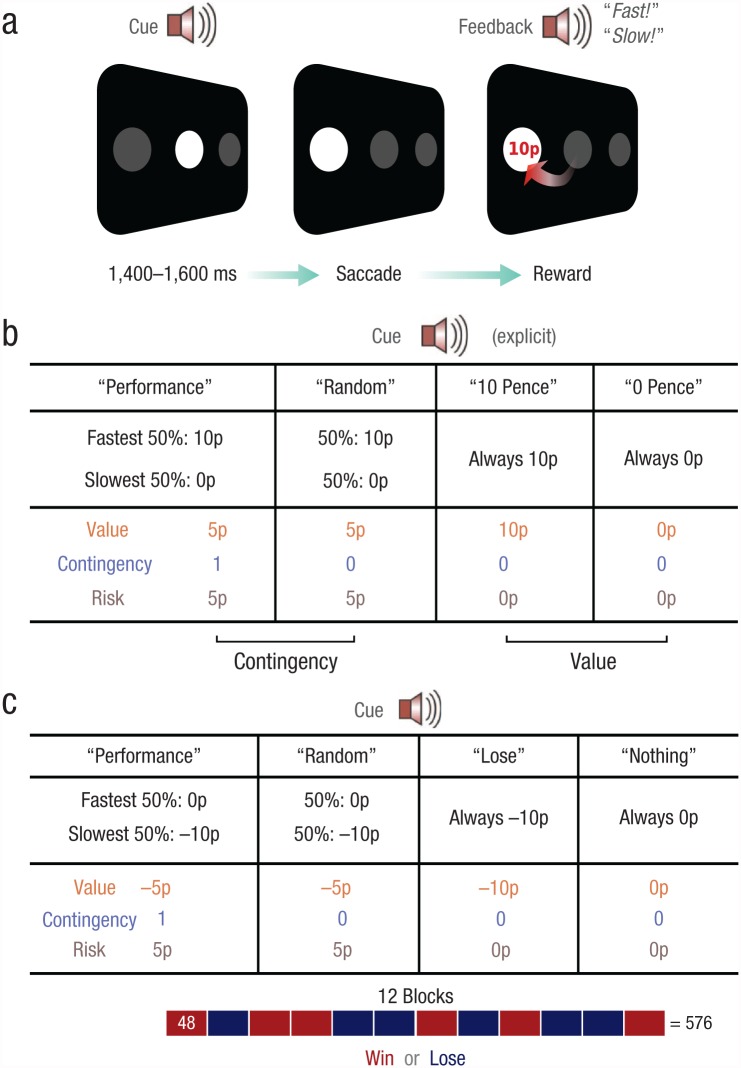Fig. 1.
Example trial sequence and design of the experiments. On each trial (a), participants were instructed to fixate on the disc in the center of the screen. One of four cues (duration = 700 ms) informed participants how reward on that trial would be determined. A target then appeared on either the left- or right-hand side of the screen, and participants had to move their eyes to the target as quickly as possible. Once their gaze arrived at the target, participants were given feedback about their reward and also their speed on that trial. In one half of each experiment, reward feedback was visual and performance feedback auditory (as shown here); in the other half of the experiment, the modalities were switched. The chart in (b) details the four cue conditions in Experiments 1 and 2. In each column, the top row indicates the auditory cue, and the middle row shows how rewards were determined for trials with that cue. For example, in the performance-based-gains condition, the fastest 50% of reaction times were rewarded, whereas in the random-gains condition, 50% of trials were randomly rewarded. The bottom row shows the value, level of contingency (1 = fully contingent, 0 = reward unrelated to performance), and risk associated with each cue. In Experiment 3, half of the blocks were identical to those in Experiment 1, but the remaining blocks involved penalty rather than reward. The chart in (c) details the four cue conditions for the penalty blocks. These blocks mirrored those in Experiment 1, except that penalties were used in place of rewards.

